Bhagat Singh
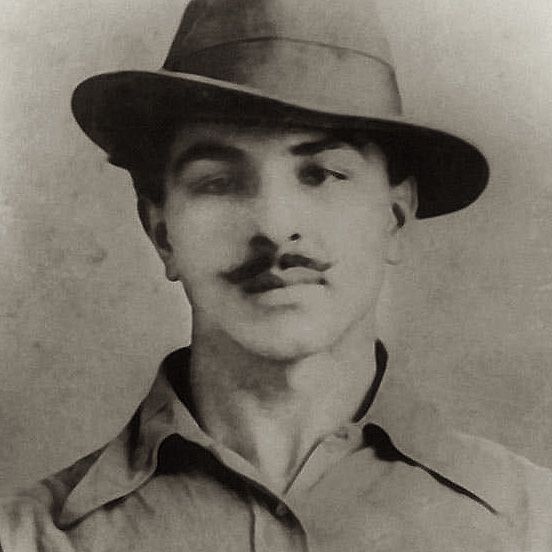
(1907-1931)
Bhagat Singh was born in Punjab, India (now Pakistan), on September 27, 1907, to a Sikh family deeply involved in political activities. He quit school at thirteen to devote his life to Indian independence. He became involved in several violent demonstrations of political defiance and was arrested several times. Singh was found guilty of killing a British police officer and hanged on March 23, 1931.

Early Years
Born on September 27, 1907, to a Sikh family in Punjab, India (now Pakistan), Bhagat Singh was the second son of Kishan Singh and Vidya Vati. The family was steeped in nationalism and involved in movements for independence. At the time of Bhagat's birth, his father was in jail for political agitation.
Young Firebrand
In 1926, Bhagat Singh founded the 'Naujavan Bharat Sabha (Youth Society of India) and joined the Hindustan Republican Association (later known as Hindustan Socialist Republican Association), where he met several prominent revolutionaries. A year later, Singh’s parents planned to have him married, a move he vehemently rejected, and he left school.
By this time, Bhagat Singh had become a person of interest to the police, and in May 1927, he was arrested for allegedly being involved in a bombing the previous October. He was released several weeks later and began to write for various revolutionary newspapers. After receiving reassurances from his parents that they wouldn’t force him to marry, he returned to Lahore.
Radical Revolutionary
In 1928, the British government held the Simon Commission to discuss autonomy for the Indian people. Several Indian political organizations boycotted the event because the Commission had no Indian representatives. In October, Bhagat Singh’s comrade, Lala Lajpat Rai led a march in protest against the Commission. Police attempted to disburse the large crowd, and during the melee, Rai was injured by the superintendent of police, James A. Scott. Rai died of heart complications two weeks later. The British government denied any wrongdoing.
To avenge his friend’s death, Bhagat Singh and two others plotted to kill the police superintendent, but instead shot and killed police officer John P. Saunders. Singh and his fellow conspirators escaped arrest despite a massive search to apprehend them.
In April 1929, Bhagat Singh and an associate bombed the Central Legislative Assembly in Delhi to protest implementation of the Public Safety Bill. The bombs they carried allegedly were not intended to kill but to scare (no one was killed, though there were some injuries). The bombers planned to get arrested and stand trial so they could further promote their cause.
Arrest and Trial
The actions of the young revolutionaries was soundly condemned by followers of Gandhi, but Bhagat Singh was delighted to have a stage on which to promote his cause. He offered no defense during the trial but disrupted the proceedings with rants of political dogma. He was found guilty and sentenced to life in prison.
Through further investigation, the police discovered the connection between Bhagat Singh and the murder of Officer Saunders and he was rearrested. While awaiting trial, he led a hunger strike in prison. Eventually, Singh and his co-conspirators were tried and sentenced to hang. He was executed on March 23, 1931. It is said that he kissed the hangman’s noose before it was placed around his neck. His death brought mixed emotions throughout India. Followers of Gandhi felt that he was too radical and hurt the quest for freedom, while his supporters considered him a martyr. Singh remains a significant, though controversial, figure in India’s independence movement.
QUICK FACTS
- Name: Bhagat Singh
- Birth Year: 1907
- Birth date: September 27, 1907
- Birth City: Punjab
- Birth Country: British India (now Pakistan)
- Gender: Male
- Best Known For: Considered to be one of the most influential revolutionaries of the Indian independence movement, Bhagat Singh gave his life for this cause.
- World Politics
- Astrological Sign: Virgo
- Dayanand Anglo Vedic High School And National College
- Nacionalities
- Interesting Facts
- At age 13, Bhagat Singh quit school to become a revolutionary.
- Occupations
- Political Activist
- Death Year: 1931
- Death date: March 23, 1931
- Death City: Lahore
- Death Country: British India (now Pakistan)
We strive for accuracy and fairness.If you see something that doesn't look right, contact us !
CITATION INFORMATION
- Article Title: Bhagat Singh Biography
- Author: Biography.com Editors
- Website Name: The Biography.com website
- Url: https://www.biography.com/political-figures/bhagat-singh
- Access Date:
- Publisher: A&E; Television Networks
- Last Updated: August 14, 2019
- Original Published Date: May 7, 2015
- Every tiny molecule of Ash is in motion with my heat I am such a Lunatic that I am free even in Jail.
- Any man who stands for progress has to criticize, disbelieve and challenge every item of the old faith.
- The sanctity of law can be maintained only so long as it is the expression of the will of the people.
Watch Next .css-smpm16:after{background-color:#323232;color:#fff;margin-left:1.8rem;margin-top:1.25rem;width:1.5rem;height:0.063rem;content:'';display:-webkit-box;display:-webkit-flex;display:-ms-flexbox;display:flex;}

Famous Political Figures
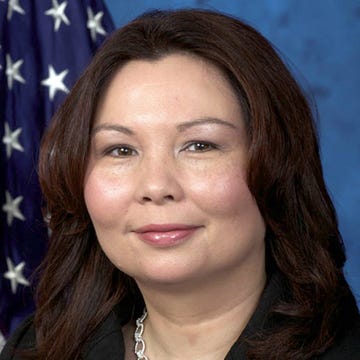
Julius Caesar
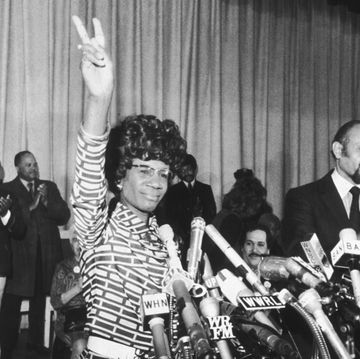
10 of the First Black Women in Congress

Kamala Harris

Deb Haaland
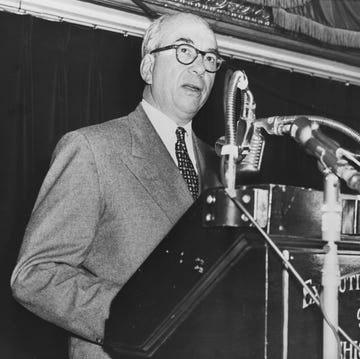
Why Lewis Strauss Didn’t Like Oppenheimer

Madeleine Albright

These Are the Major 2024 Presidential Candidates

Hillary Clinton

Indira Gandhi

Toussaint L'Ouverture

Vladimir Putin
Talk to our experts
1800-120-456-456
- Bhagat Singh Biography

About Bhagat Singh
Bhagat Singh was born on September 27, 1907, in the village of Banga near Lyallpur district in Punjab, British India. He was an Indian freedom fighter who is considered to be one of the most influential revolutionaries of the Indian independence movement. Bhagat Singh joined the Hindustan Republican Association (HRA) at a young age and became involved in revolutionary activities. He participated in several acts of sabotage against British institutions, including an attempt to bomb the Central Legislative Assembly in Delhi. In 1929, he and two other activists were convicted of assassinating John Saunders, a British police officer. Singh was executed by hanging on March 23, 1931, at Lahore jail at the age of 23. Despite his short life, Bhagat Singh left a lasting legacy in the struggle for Indian independence. He is revered by many as a martyr and symbol of resistance to British colonialism in India. His example continues to inspire new generations of activists worldwide.
Why is it Important to read Bhagat Singh's Biography?
Bhagat Singh's life is an inspiration to all those who fight for justice and against oppression. He was a brave young man who dedicated his life to the struggle for Indian independence. His story is a reminder that even in the face of great adversity, it is possible to achieve victory. Bhagat Singh's biography provides insight into the mind of a revolutionary and offers encouragement to those who are fighting for change today. It is an important read for anyone interested in history, politics, or human rights activism. He was loved and respected by the people of India, who continue to honor his memory.
Bhagat Singh's life was cut short at a young age, but he left behind an enduring legacy that continues to inspire new generations around the world today. His story is unforgettable for anyone interested in history or human rights activism. He fought against oppression with all his might until his death at 23 years old, leaving behind a lasting impact on Indian society during its struggle for independence from British rule. Bhagat Singh Biography provides valuable insight into the mind of a revolutionary leader whose passion will live forever in history books worldwide. It belongs on every bookshelf next to biographies of other influential figures such as Mahatma Gandhi and Nelson Mandela. The importance of reading Bhagat Singh's biography cannot be overstated.
What are Some of the Key Events in Bhagat Singh's Biography?
Some of the key events in Bhagat Singh's biography include:
Born on September 27, 1907, in Banga
Joined Hindustan Republican Association (HRA) at a young age
Participated in several acts of sabotage against British institutions, including an attempt to bomb the Central Legislative Assembly.
How did Bhagat Singh influence the Indian Independence Movement?
Bhagat Singh had a great impact on the Indian independence movement due to his participation in various activities that led India towards its freedom from colonial rule. His involvement with revolutionary groups resulted in him being jailed for various crimes, but he continued his activism even behind bars through writing and publishing newspapers aimed at spreading nationalist sentiments among people all over India. He was executed by hanging when he was 23 years old after leading an unsuccessful plot to kill a British police officer who ordered a lathi charge on Lala Lajpat Rai, who was protesting colonial policies at the time. This murder had a major impact on Indian society and brought Bhagat Singh to national attention as a revolutionary hero of India's independence movement.
What is included in Bhagat Singh's biography?
Bhagat Singh's biography covers his upbringing in Punjab, his involvement with revolutionary groups throughout his teenage years, and the significant impact he had on India's struggle for independence. It details his trial when he was charged with the murder of John P. Saunders, a British police officer, as well as his life in prison leading up to his execution at Lahore jail when he was 23 years old. Throughout it all, Bhagat Singh remained strong in defense of Indian independence even in the face of great adversity.
How is Bhagat Singh's Biography useful?
Bhagat Singh's biography is both informative and entertaining to read; full of events that shaped him into becoming an influential figure during India's push for independence from British rule. While it is useful for researchers and historians, anyone interested in politics or Indian history can benefit from reading an in-depth account of the life of a revolutionary icon whose passion lives on through his legacy and impact on India's independence movement.
Some of Bhagat Singh's Most Notable Accomplishments include:
Joining the Hindustan Republican Association (HRA) at a young age and becoming involved in revolutionary activities
Participating in several acts of sabotage against British institutions, including an attempt to bomb the Central Legislative Assembly in Delhi
Being convicted of assassinating John Saunders, a British police officer, for which he was hanged at the age of 23
Being elected as the president of the HSRA shortly before being executed.

FAQs on Bhagat Singh Biography
1. What is the Best Part about Bhagat Singh's Biography?
The best thing about Bhagat Singh's biography is that it details his life in prison, trial, and execution by hanging. It is a fascinating read for anyone interested in Indian history or acti
2. Why is Bhagat Singh's Biography inspiring?
Bhagat Singh's biography inspires people all over the world because of his passion for freeing India from colonial rule through revolutionary activity despite being imprisoned on multiple occasions even before he was hanged at the age of 23. This makes him stand out as an influential figure within the Indian independence movement who remains relevant to this day through publications about his life and impact on India's struggle for independence from British colonial rule in the early 20th century.
3. How does Bhagat Singh's Biography educate Readers?
Through reading Bhagat Singh's biography, readers are educated about the Indian independence movement as it gained momentum in the early 20th century. In particular, they can learn what happened to India as a result of British rule and how people like Bhagat Singh fought for Indian freedom from colonial rule through revolutionary measures.
4. What is a Summary of Bhagat Singh's Biography?
The summary of Bhagat Singh's biography is a brief overview of his life and impact on India's struggle for independence from British colonial rule in the early 20th century. It covers everything from Bhagat Singh joining revolutionary groups, participating in acts of sabotage against various British institutions, being hanged as a result of assassinating John Saunders, to speaking up about social inequality as a result of colonialism even while he was imprisoned.
5. In What Order should I read Bhagat Singh's Biography?
To set the stage for reading an in-depth account about the life and activism of Bhagat Singh, it is best to start by familiarizing yourself with India's push for independence during British colonial rule through our section that details this topic thoroughly, followed by an article about the British Raj and how it impacted the Indian people. Once you have a basic understanding of India's struggle for independence from British rule, you can begin reading Bhagat Singh's Biography to learn about his life as a revolutionary figure during this time period.
- Bihar Board
CFA Institute
Srm university.
- Manipur 10th Result 2024
- Manipur Board Result
- Maharashtra SSC Result
- Odisha Board Result
- RBSE 10th Result 2024
- CBSE Board Result 2024
- Shiv Khera Special
- Education News
- Web Stories
- Current Affairs
- School & Boards
- College Admission
- Govt Jobs Alert & Prep
- GK & Aptitude
- general knowledge
Bhagat Singh Biography: Birth, Age, Education, Jailterm, Execution, and More About Shaheed-e-Azam
Bhagat singh biography: bhagat singh was a revolutionary freedom fighter who was hanged to death by the britishers at the age of 23 years. his early execution made him a national hero of the indian freedom struggle. on his 91st death anniversary, jagran josh takes a look at his life. .

"If someone else would have done this, I would not consider him less than a traitor..." , Bhagat Singh in a letter to his father, who sent an application to the Special Tribunal defending his son in the Lahore case.
Bhagat Singh was a revolutionary freedom fighter who was hanged to death by the Britishers at the age of 23 years . His early execution made him a national hero of the Indian freedom struggle against colonial rule. Fondly called Shaheed Bhagat Singh, many consider him one of the earliest Marxists of India.
Remembering Shaheed Bhagat Singh on his birth anniversary. His sacrifice and unwavering dedication to the cause of India’s freedom continue to inspire generations. A beacon of courage, he will forever be a symbol of India's relentless fight for justice and liberty. pic.twitter.com/cCoCT8qE43 — Narendra Modi (@narendramodi) September 28, 2023
भगत सिंह जी ने जहाँ एक ओर अपनी देशभक्ति से विदेशी हुकूमत को घुटने पर लाने का काम किया, वहीं दूसरी ओर अपने विचारों से स्वतंत्रता के संघर्ष में अलग-अलग बँटे भारत को एक करने का काम किया। देश की आजादी के लिए हँसते-हँसते फाँसी पर झूलने वाले भगत सिंह जी के सर्वोच्च बलिदान से पूरे भारत… pic.twitter.com/WugXE1R151 — Amit Shah (@AmitShah) September 28, 2023
Bhagat Singh Biography
Who was bhagat singh.
Born on 28 September 1907 in Lyallpur, western Punjab, India (present-day Pakistan) in a Sikh family, Bhagat Singh was the second son of Kishan Singh Sandhu and Vidya Vati. His grandfather Arjan Singh, father Kishan Singh and uncle Ajit Singh were actively involved in the Indian independence movement.
It is said that when Bhagat Singh was born, his father and two uncles were behind bars for taking part in the agitation around the Canal Colonization Bill in 1907.
After studying in a village school for a couple of years, he attended an Anglo-Vedic school in Lahore , operated by Arya Samaj. In 1923, he was admitted to the National College in Lahore which was founded by the Indian Independence activist Lala Lajpat Rai. The college which was established two years ago was in line with Mahatma Gandhi’s call for non-cooperation to shun schools and colleges subsidised by the British government.
Revolutionary Deeds of Bhagat Singh
The killing of police officer john saunders.
Simon Commission was established by the British Government to report the political situation in India. The Commission headed by Sir John Simon was boycotted as no Indian was a part of it.
On 30 October 1928, the Commission visited Lahore. Lala Lajpat Rai led a silent march against it. In a bid to disperse the demonstrators, the Superintendent of Police, James A. Scott, ordered a lathi charge in which Rai was grievously injured. Rai died of a heart attack on 17 November 1928.
To avenge the death of Lala Lajpat Rai, Bhagat Singh along with two other two revolutionaries, Sukhdev and Rajguru , plotted to kill the Superintendent of Police . However, in case of mistaken identity, Bhagat Singh killed British Police Officer John Saunders when he was leaving the District Police Headquarters in Lahore on 17 December 1928.
Soon after this, a massive search operation was launched and Bhagat Singh had to flee from Lahore, and shave his head and beard to avoid recognition.
While Father of the Nation Mahatma Gandhi condemned the violent act committed by Bhagat Singh former Prime Minister of India Jawaharlal Nehru noted:
The Bombing of Central Assembly Hall
Some famous quotes of bhagat singh.
- “They may kill me, but they cannot kill my ideas. They can crush my body, but they will not be able to crush my spirit."
- "Revolution is an inalienable right of mankind. Freedom is an imperishable birthright of all."
- “But man's duty is to try and endeavour, success depends upon chance and environments.”
- “Philosophy is the outcome of human weakness or limitation of knowledge.”
- “Merciless criticism and independent thinking are the two necessary traits of revolutionary thinking.”
- "I am a man and all that affects mankind concerns me."
- "If the deaf is to hear, the sound has to be very loud."
- “A rebellion is not a revolution. It may ultimately lead to that end.”
- “The aim of life is no more to control the mind, but to develop it harmoniously; not to achieve salvation hereafter, but to make the best use of it here below.”
- "Any man who stands for progress has to criticize, disbelieve and challenge every item of the old faith."
Assembly case trial, jail term, and execution
Post a preliminary hearing in May, the trial in the case began in the first week of June. On June 12, both Singh and Dutt were sentenced to life imprisonment for causing explosions of a nature likely to endanger life, unlawfully and maliciously.
In 1929, his associates Sukhdev, Kishori Lal, and Jai Gopal were arrested in connection with setting up bomb factories in Lahore and Saharanpur. As the investigation in the case furthered, the police connected the dots of Saunders murder, Assembly bombing, and bomb manufacture.
Bhagat Singh who considered himself as a political prisoner, along with others, noted the discrimination between the European and the Indin prisoners. The political prisoners demanded equality in food standards, clothing, toiletries, and other hygienic necessities, as well as access to books and a daily newspaper.
Singh along with other prisoners underwent a hunger strike. Failed attempts were made to break the strike by the government. With the nationwide popularity of the hunger strike, the government decided to advance the Lahore Conspiracy Case Singh was transported to Bostal Jail in Lahore and the trial began on 10 July 1929.
Singh, Rajguru, and Sukhdev were hanged to death in Lahore Conspiracy Case on 23 March 1931 at 7:30 pm.
Get here current GK and GK quiz questions in English and Hindi for India , World, Sports and Competitive exam preparation. Download the Jagran Josh Current Affairs App .
- At what age did Bhagat Singh die? + Bhagat Singh was hanged to death at the age of 23 years.
- Why Bhagat Singh was hanged to death? + Bhagat Singh was hanged to death on 23 March 1991 in Lahore Conspiracy Case.
- Who was Bhagat Singh? + Bhagat Singh was a revolutionary freedom fighter who was executed by hanging by Britishers at the age of 23 years. His execution at an early age made him a national hero of the Indian freedom struggle against British colonial rule. He is fondly known as Shaheed Bhagat Singh.
- KKR vs SRH IPL Final 2024
- IPL 2024 Final
- T20 World Cup Teams and Sqauds
- India T20 World Cup Squad 2024
- IPL Winners List
- IPL 2024 Points Table
- Memorial Day 2024
- Orange Cap in IPL 2024
- RBSE 10th Result 2024 Date and Time
- Manipur HSLC Result 2024
- Personalities of India
- Political Leaders of India
- GK for State PSC
- GK for UPSC
- GK for Banking
Latest Education News
T20 World Cup 2024 Commentators List: हिंदी कमेंट्री पैनल में शामिल है ये भारतीय दिग्गज, देखें पूरी सूची
ICC T20 World Cup 2024: T20 वर्ल्ड कप का शेड्यूल जारी, कब और किससे है India का Match देखें यहां
Lok Sabha Election 2024: भारत के कौन-से नेता मुख्यमंत्री या मंत्री रहे बिना सीधे बने प्रधानमंत्री?
RBSE 10th Result 2024 Roll Number Link: बेसब्री खत्म, राजस्थान बोर्ड 10वीं रिजल्ट आज शाम 5 बजे, rajresults.nic.in से डाउनलोड करें Marksheet
[Result Link] JAC 8th Result 2024: 8वीं के नतीजे जारी, jac.jharkhand.gov.in पर Roll Number से डाउनलोड करें Marksheet
RBSE 10th Result 2024 LIVE: Tomorrow at 5pm, Check Official Rajasthan Board Class 10 Result Date, Time at rajeduboard.rajasthan.gov.in, Direct Link
RBSE 10th Result 2024 LIVE: कंफर्म! राजस्थान बोर्ड 10वीं रिजल्ट कल शाम 5 बजे होगा जारी, देखें Direct Link के साथ लेटेस्ट न्यूज
Bihar ITICAT Admit Card 2024 OUT: बिहार आईटीआई प्रवेश परीक्षा एडमिट कार्ड bceceboard.bihar.gov.in पर जारी, इस लिंक से करें डाउनलोड
Rajasthan Board 10th Result 2024 Date OUT: बड़ा अपडेट! आरबीएसई 10वीं कक्षा के नतीजे कल शाम 5 बजे, ऐसे कर सकेंगे डाउनलोड
RBSE 10th Result 2024: हो गई घोषणा! कल शाम 5 बजे जारी होगा राजस्थान बोर्ड 10वीं का रिजल्ट, इस आधिकारिक Website पर मिलेगा Direct Link
Durg University Result 2024 OUT at durguniversity.ac.in: Direct Link to Download UG, PG Marksheet
WBCS Final Answer Key 2024 Released at wbpsc.gov.in: Check Download Link
RBSE 10th Result 2024: राजस्थान 10वीं रिजल्ट Link at Jagran Josh, rajeduboard.rajasthan.gov.in, rajresults.nic.in
RBSE Result 2024: राजस्थान बोर्ड रिजल्ट Link at Jagran Josh, rajeduboard.rajasthan.gov.in, rajresults.nic.in
joinindianarmy.nic.in पर जारी हुआ Indian Army Agniveer Result 2024 यहाँ से चेक करें PDF
Only 2% of sharp minds can spot the fourth person in the picture in 5 seconds!
SSC GD Result 2024 Live Update: Direct Link to Constable Results Soon, Check Merit List, Score Dates
Current Affairs One Liners: 28 May 2024-Chairman of DRDO-Dr. Sameer V Kamat
Current Affairs Quiz: 28 May 2024- World Hunger Day 2024
Brain Teaser: Only 2 Out of 11 People Can Spot the Hidden Spring in 11 Seconds

Bhagat Singh Jayanti, Biography, History, Revolutionary Activities
Bhagat Singh born in September 28, 1907 was an Indian revolutionary freedom fighter. Know all about Bhagat Singh Jayanti, Biography, Death and Important Facts for UPSC & Other government exams.
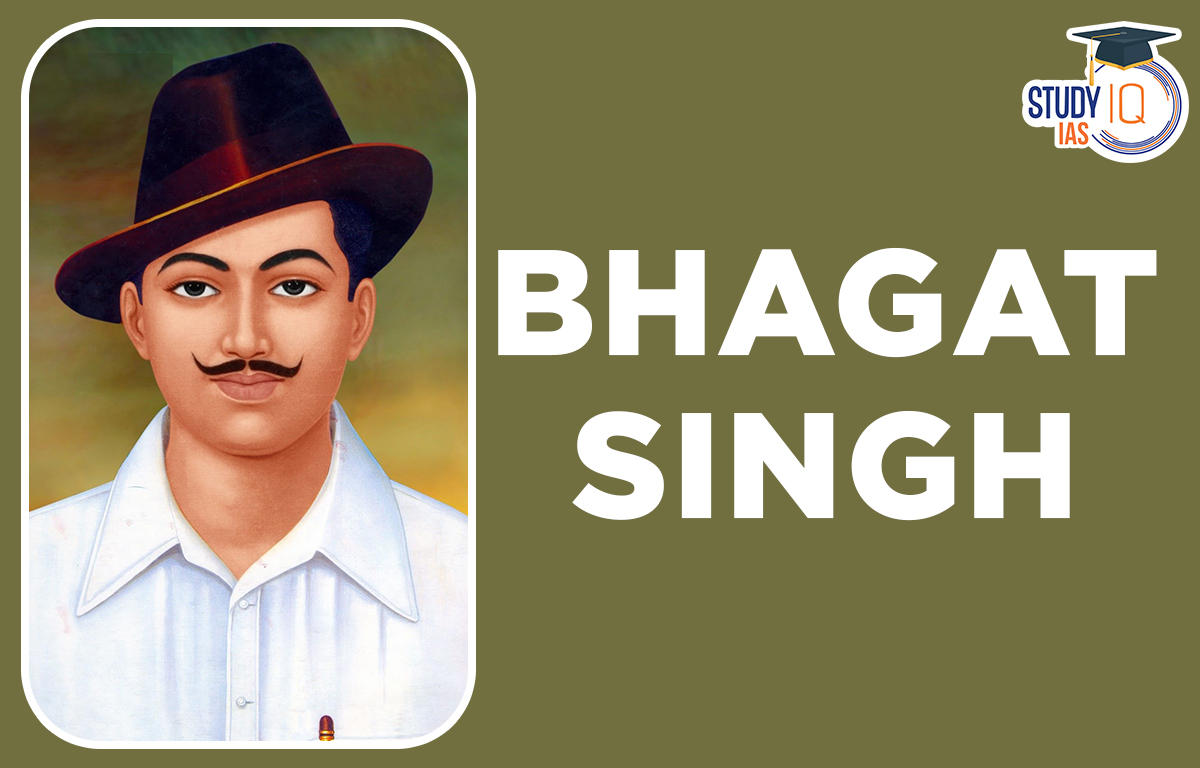
Table of Contents
Bhagat Singh (1907-1931) was a charismatic Indian revolutionary who is considered one of the most famous and iconic figures in the Indian independence movement. He was a staunch advocate of socialist and communist ideals, and he believed in using violence to achieve independence from British rule. He is considered one of the most influential nationalist leaders of the Indian Independence movement .
He is also referred to as ‘Shaheed Bhagat Singh’ . The word ‘Shaheed’ means a martyr. “If the deaf are to hear, the sound has to be very loud. When we dropped the bomb, it was not our intention to kill anybody, we have bombed the British Government, British must quit India and make it free.” He said this after the Assembly Bombing.
Bhagat Singh Jayanti
Bhagat Singh Jayanti, also known as Shaheed Bhagat Singh’s birth anniversary, is observed on September 28th every year. It commemorates the birth anniversary of Bhagat Singh, a prominent freedom fighter of India and revolutionary in India’s struggle for independence from British colonial rule. On this day, people across India pay tribute to his courage, patriotism, and sacrifice for the nation. Various events, seminars, and cultural programs are organized to remember his legacy and the ideals he stood for. Bhagat Singh’s contributions to the independence movement continue to inspire generations of Indians.
Bhagat Singh Biography
All those who stand up for justice and struggle against injustice might find inspiration in his life. At a very young age, he devoted his entire life was devoted to the fight for India’s Independence. His History is a reminder that success is still attainable even in the face of extreme adversity. The biography of Bhagat Singh offers inspiration to people battling for change today and offers a glimpse into the revolutionary’s mentality.
Bhagat Singh History
One of the most important revolutionaries in the Indian Nationalist Movement is Bhagat Singh. On September 28, 1907, Kishan Singh and Vidyavati gave birth to Bhagat Singh in Banga, Lyallpur District (now Pakistan). When he was born, his uncles Ajit and Swaran Singh, as well as his father Kishan Singh, were all imprisoned for protesting the 1906 Colonization Bill. Being raised in a politically conscious household where his family supported the Ghadar Party, young Singh developed a sense of patriotism. Singh started supporting Mahatma Gandhi’s Non-Cooperation Movement at a very young age. He openly resisted the British and carried out Gandhi’s request by setting fire to publications that the government-sponsored. In fact, he quit school altogether to enroll in Lahore’s National College. The 1919 Jallianwala Bagh Massacre and the 1921 murder of unarmed Akali demonstrators at the Nankana Sahib both occurred when he was a teenager, and both events strongly influenced his patriotic viewpoint. His family adhered to the Gandhian philosophy of using non-violence to achieve Swaraj. For a while, he also backed the Indian National Congress and the objectives of the Non-Cooperation Movement . After the Chauri Chaura Incident , Gandhi demanded that the movement against non-cooperation be abandoned. He disassociated himself from Gandhi’s nonviolent effort because of the choice and joined the Young Revolutionary Movement instead. Thus began his career as the most well-known proponent of a bloody uprising against the British Raj. The Naujawan Bharat Sabha was established in March 1925, with he serving as its secretary, and was motivated by nationalist movements in Europe. In addition, He joined the radical Hindustan Republican Association (HRA), which he eventually renamed the Hindustan Socialist Republican Association (HSRA) with fellow revolutionaries Chandra Shekhar Azad and Sukhdev.
Freedom fighters Revolutionary Activities
His political activism began in earnest during the 1920s. He was involved in a number of protests and demonstrations against British rule, and he also participated in several armed robberies to fund the HSRA’s activities. His early actions consisted primarily of penning critical articles against the British government and printing and distributing leaflets explaining the fundamentals of a violent insurrection with the goal of overthrowing the government. To protest the Simon Commission’s arrival, Lala Lajpat Rai led an all-parties parade that marched toward the Lahore train station on October 30, 1928. To stop the protesters from moving forward, the police used a violent lathi charge. The revolutionaries were not able to recognize J.P. Saunders, who was Assistant Superintendent of Police; they thought that he was a Scott and killed him instead. He quickly left Lahore to avoid getting caught. To avoid being recognized, he shaved his beard and cut his hair, violating the core values of Sikhism.
Hindustan Socialist Republican Association (HSRA)
- He was a prominent revolutionary in India’s fight for independence, closely aligned with the Hindustan Socialist Republican Association (HSRA).
- Joining the HSRA in his youth, Singh was drawn to its militant approach against British colonial rule.
- Notable members included Sukhdev Thapar and Shivaram Rajguru.
- Singh and his associates became infamous for actions such as the Saunders killing, seeking revenge for the death of Lala Lajpat Rai, and the Central Legislative Assembly bombing to protest repressive laws.
- Their hunger strike in prison gained widespread support.
- Executed by the British in 1931, Singh’s martyrdom remains an enduring symbol of courage and sacrifice in India’s struggle for freedom.
Assassination of J.P. Saunders
- He and his compatriot Rajguru assassinated J.P. Saunders in 1928 to avenge the death of Lala Lajpat Rai during a protest against the Simon Commission.
- Mistakenly identifying Saunders as the responsible police officer, they shot him dead in Lahore.
- This act marked a significant turning point in India’s struggle for independence and propelled Singh and his associates into the national spotlight, as they openly dared to challenge British colonial rule.
Central Assembly Bombing Case
- Singh and Batukeshwar Dutt exploded a bomb in Delhi’s Central Assembly on April 8, 1929, from the Visitors’ Gallery.
- They also raised pro-revolutionary banners and threw leaflets.
- Because they planned to utilize the trial as a platform to propagate their message of revolution and anti-imperialism, neither revolutionary resisted being taken into custody.
- Throughout the entire arrest, they screamed “Inquilab Zindabad” slogans.
- The phrase gained a lot of traction with young people and many liberation warriors.
- They never intended to hurt anyone physically, thus there were no casualties in the incident.
- Their claimed objective was “to make the deaf hear.” Auguste Valliant, a French anarchist who was hanged by France for a similar incident in Paris, served as inspiration for Bhagat Singh, the incident’s mastermind.
- Both Singh and Dutt received life sentences in jail after being found guilty in the incident’s trial.
- At this point, He had also been connected to the JP Saunders murder case.
- He was charged with the murder of Saunders together with Rajguru and Sukhdev.
Dr.Sarvepalli Radhakrishnan Biography
1929 Assembly Incident Trial
- The violent protest was met with harsh criticism from the political body.
- In response, Singh said, “Force, when used violently, is ‘violence’ and is, thus, morally indefensible, but when it is used in support of a righteous cause, it has its moral legitimacy.
- Trial proceedings began in May, with Singh attempting to represent himself and Batukeshwar Dutt being represented by Afsar Ali.
- The explosions’ malevolent and illegal motive was cited by the court in its decision in favour of a life sentence.
Lahore Conspiracy Case and Trial
- Three people, Hans Raj Vohra, Jai Gopal, and Phanindra Nath Ghosh, turned government approvers, which resulted in a total of 21 arrests, including those of Sukhdev, Jatindra Nath Das, and Rajguru.
- The police raided the HSRA bomb factories in Lahore shortly after the sentencing and detained several well-known revolutionaries.
- For the murder of Assistant Superintendent Saunders, the making of bombs, and the Lahore Conspiracy case, Bhagat Singh was detained once again.
- On the orders of the Viceroy, Lord Irwin, a special tribunal made up of Justices J. Coldstream, Agha Hyder, and G. C. Hilton was established on May 1st, 1930 due to the sluggishness of the legal proceedings.
- The tribunal had the authority to conduct the trial without the presence of the defendant, and it was a biased trial that rarely followed the standard legal rights principles.
Hunger Strike
- When Singh was sent to the Central Jail Mianwali from the Delhi jail he witnessed discrimination between the Indian and European Prisoners.
- He considered himself as a political prisoner.
- He organized a hunger strike on behalf of fellow political prisoners from India who he believed were being treated like normal criminals.
- They wanted access to literature and a daily newspaper, as well as equality in access to food standards, clothing, toiletries, and other hygiene essentials.
- They contended that they shouldn’t be made to perform manual labour or any other inhumane tasks while incarcerated.
- Around June 1929, the public began to support Bhagat Singh and his colleagues more due to the hunger strike.
- After a 63-day hunger strike, Jatindra Nath Das passed away on September 13, 1929.
- Nearly all of the nation’s nationalist leaders paid respects to Jatin Das.
- In response, Gopi Chand Bhargava and Mohammad Alam withdrew from the Punjab Legislative Council.
- Nehru also successfully sponsored an adjournment motion in the Central Assembly to denounce the “inhumane treatment” of the Lahore captives.
- He finally ended the hunger strike after 116 days on October 5, 1929.
- During this time, Singh was well-liked outside of Punjab among ordinary Indians.

Thoughts and Opinions
His sense of patriotism had been embedded in him since a very young age. He was raised to value nationalism and yearned for an independent India free from British rule. He developed a socialist outlook after reading a lot of European literature and creating a great desire for a democratic future for his beloved nation. Singh was born a Sikh, but after seeing numerous Hindu-Muslim riots and other religious upheavals, he began to lean toward atheism. He thought that in order to attain something as precious as Independence, imperialism’s exploitative aspect needed to be eradicated. According to his opinion, only an armed revolution along the lines of the Bolshevik Revolution in Russia could bring about such transformation. He coined the phrase “Inquilab Zindabad,” which eventually became the war cry of the campaign for Indian independence.
Bhagat Singh Death
He died on March 23, 1931, at 7:30 in the morning, hanging with his friends Rajguru and Sukhdev at the Lahore Jail. He was 23 at that time. He was born on September 28, 1907. They allegedly shouted their favorite slogans, such as “Inquilab Zindabad” and “Down with British Imperialism,” as they marched joyfully to the execution location bank of the Sutlej River.

Shaheed Bhagat Singh Legacy
He was the perfect role model for the youth of his period because of his passionate patriotism and developed idealism. Also became the voice of his generation through his criticism of the British Imperial Government in writing and speech. Numerous people have questioned his dramatic departure from Gandhi’s non-violent path to Swaraj, yet with his daring embrace of martyrdom, he encouraged hundreds of teenagers and young adults to fully engage in the freedom movement.
His legacy is complex and contested. He is revered by many Indians as a national hero and a symbol of the struggle for independence. However, he is also criticized for his use of violence and his association with the HSRA, which was responsible for several other acts of violence against British officials and civilians.
Despite the controversies surrounding his legacy, there is no doubt that he was a charismatic and influential figure who played a significant role in the Indian independence movement. His life and work continue to inspire generations of Indians who are fighting for social justice and equality.
Sharing is caring!

Bhagat Singh Jayanti FAQs
Why bhagat singh is famous.
Bhagat Singh was an Indian revolutionary freedom fighter who was hanged to death by British colonisers at the age of 23 years. Fondly known as 'Shaheed (martyr) Bhagat Singh', he is considered a national hero of India's freedom struggle against colonial rule.
What is Bhagat Singh real name?
His real name was Bhagat Singh but he was also known as Shaheed-e-Azam.
Why did Gandhi not save Bhagat?
Gandhi, who advocated for nonviolence, disagreed with Bhagat Singh and his allies' use of violence to obtain freedom. That didn't imply Gandhi supported hanging Bhagat Singh and his pals insinually.
Who was better Gandhi or Bhagat Singh?
Bhagat Singh engaged in a revolutionary armed fight laced with violence against the British government, while Mahatma Gandhi led a civil disobedience movement based on the values of nonviolence and satyagraha. Despite having different philosophies and worldviews, each has the same goal.
What's the slogan of Bhagat Singh?
One of Bhagat Singh's most famous slogans is "Inquilab Zindabad."
What is the bhagat singh death age?
Bhagat Singh died at the age of 23. He was born on September 28, 1907, and was executed on March 23, 1931.
Give me a Brief information about Bhagat Singh.
Bhagat Singh (28 September 1907 – 23 March 1931) was an Indian revolutionary who challenged British rule of India. He is considered to be one of the most important figures in the Indian independence movement. In 1928, Bhagat Singh and other HRA members assassinated John Saunders, a British police officer. They were convicted of murder and sentenced to death. Singh was hanged on 23 March 1931 at the age of 23.
What is bhagat singh date of birth and death?
Bhagat Singh was born on September 28, 1907, and died on March 23, 1931.
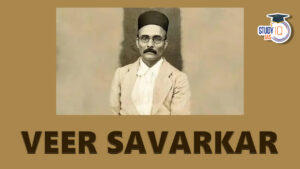
Leave a comment
Your email address will not be published. Required fields are marked *
Save my name, email, and website in this browser for the next time I comment.
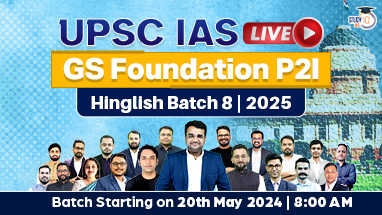
- UPSC Online Coaching
- UPSC Exam 2024
- UPSC Syllabus 2024
- UPSC Prelims Syllabus 2024
- UPSC Mains Syllabus 2024
- UPSC Exam Pattern 2024
- UPSC Age Limit 2024
- UPSC Calendar 2024
- UPSC Syllabus in Hindi
- UPSC Full Form
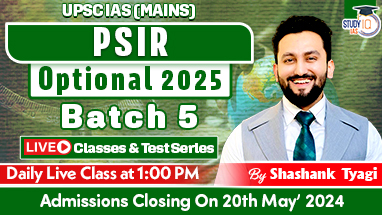
Recent Posts
- UPPSC Exam 2024
- UPPSC Calendar
- UPPSC Syllabus 2024
- UPPSC Exam Pattern 2024
- UPPSC Application Form 2024
- UPPSC Eligibility Criteria 2024
- UPPSC Admit card 2024
- UPPSC Salary And Posts
- UPPSC Cut Off
- UPPSC Previous Year Paper
BPSC Exam 2024
- BPSC 70th Notification
- BPSC 69th Exam Analysis
- BPSC Admit Card
- BPSC Syllabus
- BPSC Exam Pattern
- BPSC Cut Off
- BPSC Question Papers
IB ACIO Exam
- IB ACIO Salary
- IB ACIO Syllabus
CSIR SO ASO Exam
- CSIR SO ASO Exam 2024
- CSIR SO ASO Result 2024
- CSIR SO ASO Exam Date
- CSIR SO ASO Question Paper
- CSIR SO ASO Answer key 2024
- CSIR SO ASO Exam Date 2024
- CSIR SO ASO Syllabus 2024
Study Material Categories
- Daily The Hindu Analysis
- Daily Practice Quiz for Prelims
- Daily Answer Writing
- Daily Current Affairs
- Indian Polity
- Environment and Ecology
- Art and Culture
- General Knowledge
- Biographies
IMPORTANT EXAMS

- Terms & Conditions
- Return & Refund Policy
- Privacy Policy
Win up to 100% Scholarship
- UPSC Online
- UPSC offline and Hybrid
- UPSC Optional Coaching
- UPPCS Online
- BPSC Online
- MPSC Online
- MPPSC Online
- WBPSC Online
- OPSC Online
- UPPCS Offline Coaching
- BPSC Offline Coaching
- UPSC Test Series
- State PSC Test Series
- DAILY CURRENT AFFAIRS
- SUBJECT WISE CURRENT AFFAIRS
- DAILY EDITORIAL ANALYSIS
- DAILY CURRENT AFFAIRS QUIZ
- Daily Prelims(MCQs) Practice
- Daily Mains Answer Writing
- Free Resources

- Offline Centers
- NCERT Notes
- UDAAN Notes
- UPSC Syllabus
- UPSC Prelims PYQs
- UPSC Mains PYQs
- Prelims Preparation

Bhagat Singh: Biography, Scholarly Works, and His Religious and Political Beliefs
On 23 March Martyr’s Day ( Shahid Diwas ) is celebrated in the memory of three freedom fighters Bhagat Singh , Rajguru and Sukhdev.
Bhagat Singh Biography
- Birth: Bhagat Singh was born on September 28, 1907 in the village of Banga in Lyallpur district (present-day Faisalabad, Pakistan).
- Death: He was hanged for murdering British police officer John Saunders in 1931 , at the age of only 23.
- Politically Active: Both Bhagat Singh’s father Kishan and uncle Ajit were politically active against the British.
- His uncle was deported to Mandalay in 1907 for his inflammatory speeches and agitation against the Punjab Colonisation Bill.
- Association with Ghadar Party: After his release, he headed to Europe and then America from where he was associated with the San-Francisco based Ghadar Party.
- Dissenter: Chris Moffat wrote in India’s Revolutionary Inheritance: The politics and promise of Bhagat Singh (2019) – “ a dissenter from a family of dissenters. “
Scholarly Works
- Journals: He wrote for Kirti, the journal of the Kirti Kisan Party and briefly for the Veer Arjun newspaper, published in Delhi.
- Pseudonyms: Singh often used pseudonyms including Balwant, Ranjit and Vidhrohi.
- Poetic Influence : His jail notebooks reveal not only his social and political concerns , but also the kind of literature he was reading while in prison, which included poetry by the likes of Rabindranath Tagore, William Wordsworth, Waiid Ali Shah, Mirza Ghalib and lqbal.
- Religious and Political Beliefs: Despite his present-day co-option by parties across the political spectrum, Bhagat Singh was a steadfast atheist and a Marxist with an anarchist tilt.
Reasons For Practising Atheism by Bhagat Singh
- For him, scientific principles provided a more reliable and logical framework for understanding the world than religious doctrines.
- Socialism and Class Struggle: Bhagat Singh was also an advocate of socialist ideals and saw religion, particularly organized religion, as a potential tool used by the ruling class to control and manipulate the masses.
- Opposition to Dogma and Superstition : He argued that blind faith and unquestioning acceptance of religious doctrines hindered progress and critical thinking and believed in reason and scientific inquiry.
- Secularism and Inclusivity: He opposed the idea of a theocratic state and believed in the separation of religion from the affairs of the state.
Bhagat Singh’s Defence
- Jinnah Defendend: British attempted to pass a Bill which would make it legal to conduct a trial in absentia — without the presence of the accused and Jinnah stood steadfastly against this.
- Jawaharlal Nehru Defended: Nehru was highly critical of the legal process and the injustice being perpetrated by the British.
To get PDF version, Please click on "Print PDF" button.

- Recent Post
- Related Post
- Most Viewed Post

Fire Outbreaks In Delhi And Rajkot: A Criminal Abdication
Marital rape is antithetical to equality and autonomy, role of taxes in making india viksit bharat in 2047.

The Spectre of Nuclear Conflict, Once Again
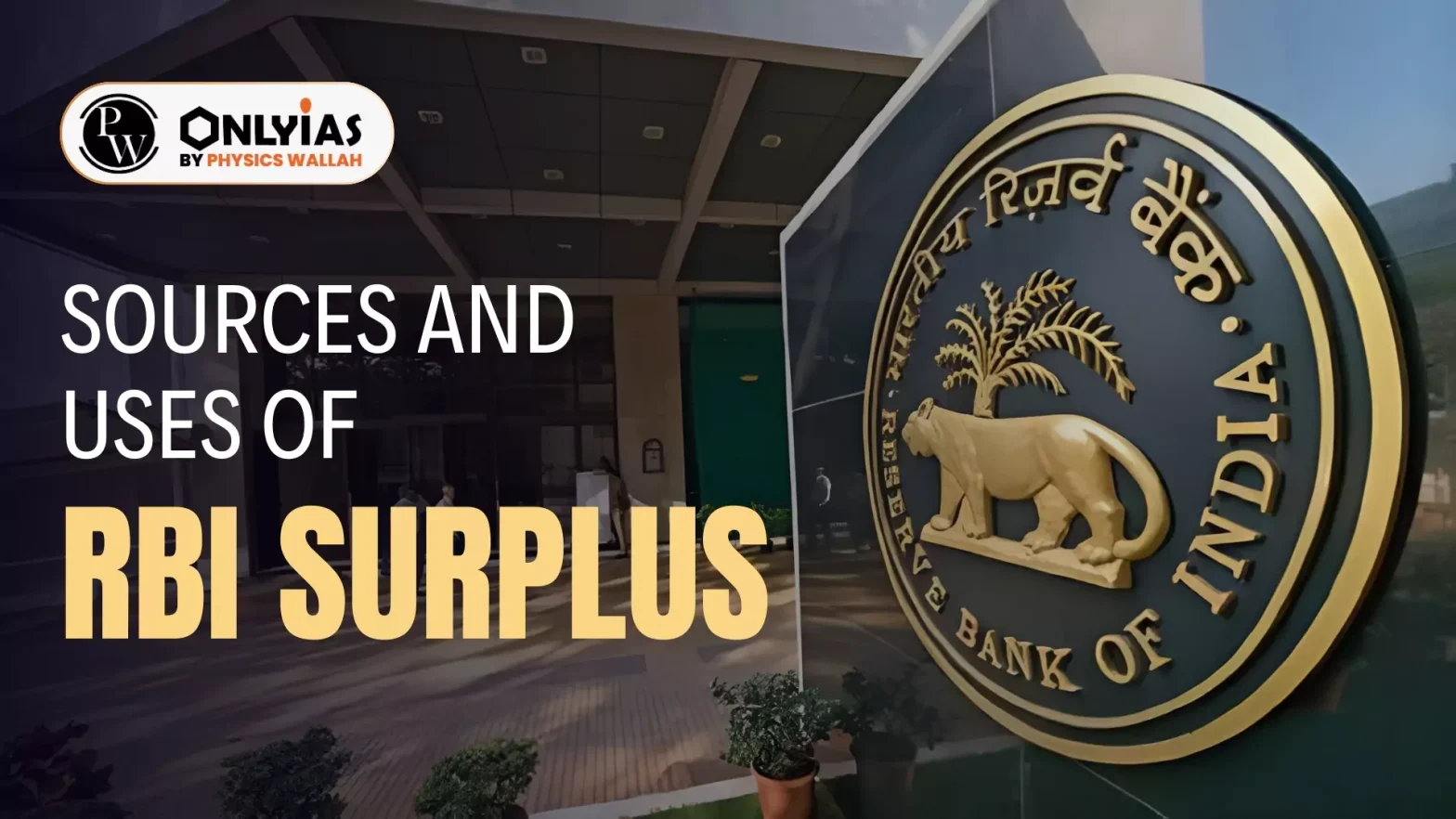
Sources and Uses of RBI Surplus
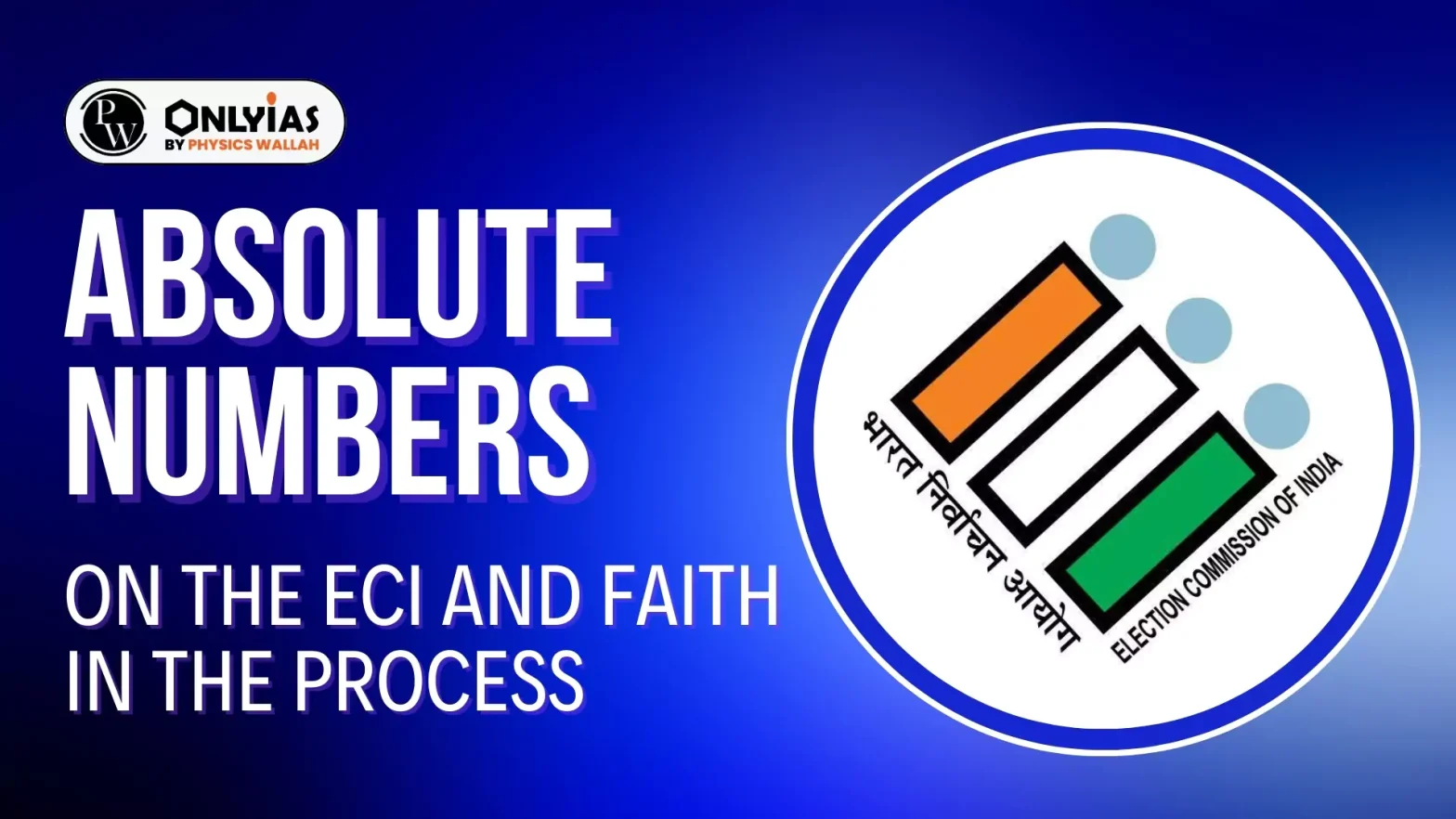
Absolute Numbers, On the ECI and Faith in the Process
Outreach to diaspora and statesmanship, india and the artemis accords, laying the foundation for a future-ready digital india, the united states of india.

India’s Health Care Journey: Progress and Promise | PW...

Patient Safety Rights Charter: A Global Initiative for Safer...
Latest comments, recent editorial.
Fire Outbreaks In Delhi And Rajkot: A Criminal Abd...
Marital Rape Is Antithetical To Equality And Auton...
Role of Taxes in Making India Viksit Bharat in 204...
Absolute Numbers, On the ECI and Faith in the Proc...
Popular current affairs
Menstrual Hygiene in Indian Prisons
India in Trade deficit with 9 of top 10 trading pa...
Eco-restoration
Adani Ports to enter Sensex
Oedocladium Sahyadricum
Our Courses

THE MOST LEARNING PLATFORM
Learn From India's Best Faculty

Our Initiatives
Beginner’s roadmap, quick links.

PW-Only IAS came together specifically to carry their individual visions in a mission mode. Infusing affordability with quality and building a team where maximum members represent their experiences of Mains and Interview Stage and hence, their reliability to better understand and solve student issues.
Subscribe our Newsletter
Sign up now for our exclusive newsletter and be the first to know about our latest Initiatives, Quality Content, and much more.
Contact Details
G-Floor,4-B Pusha Road, New Delhi, 110060
- +91 9920613613
- [email protected]
Download Our App
Biginner's roadmap, suscribe now form, fill the required details to get early access of quality content..
Join Us Now
(Promise! We Will Not Spam You.)
CURRENT AF.
<div class="new-fform">
Select centre Online Mode Hybrid Mode PWonlyIAS Delhi (ORN) PWonlyIAS Delhi (MN) PWonlyIAS Lucknow PWonlyIAS Patna Other
Select course UPSC Online PSC ONline UPSC + PSC ONLINE UPSC Offline PSC Offline UPSC+PSC Offline UPSC Hybrid PSC Hybrid UPSC+PSC Hybrid Other
</div>

- IAS Preparation
- UPSC Preparation Strategy
- Bhagat Singh
Bhagat Singh - UPSC Modern History Notes
Bhagat Singh is an important figure in the history of the Indian freedom movement. He was a revolutionary leader who was executed by the British. In this article, you can read all about Bhagat Singh’s contributions and role in the revolutionary freedom movement, for the Indian history segment of the UPSC syllabus .
Bhagat Singh Short Notes Download PDF Here
Bhagat Singh [Short Note]
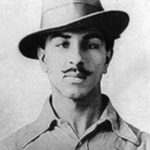
Bhagat Singh was born into a Sikh family in 1907 in Lyallpur District, present-day Pakistan.
- Bhagat Singh’s family members were involved in the freedom struggle and he was drawn towards the Indian independence movement from a very young age.
- As a child, he defied the British government by burning textbooks recommended by it.
- Initially, he supported Mahatma Gandhi and the Non-Cooperation Movement .
- However, when Gandhiji withdrew the movement in the wake of the Chauri Chaura incident , Bhagat Singh turned to revolutionary nationalism.
- He was particularly affected by the Jallianwala Bagh massacre (1919) and the violence against unarmed Akali protestors at Nankana Sahib (1921).
- Inspired by leftist writings he read widely, Bhagat Singh was an atheist and against capitalism.
Bhagat Singh’s Revolutionary Activities/Contributions to Freedom Struggle
Although there have been many leaders from the revolutionary mould, Bhagat Singh’s name is always first quoted when talking about revolutionary freedom fighters of India.
- This organisation aimed to encourage revolution against British rule by rallying the peasants and workers.
- Bhagat Singh served as the organisation’s secretary.
- In 1928, he established the Hindustan Socialist Republican Association ( HSRA ) along with Sukhdev, Chandrashekhar Azad and others.
- Bhagat Singh and his revolutionary friends decided to avenge the death of the dear leader.
- However, in a case of mistaken identity, they assassinated another police official J P Saunders.
- This was part of the Lahore Conspiracy Case .
- After this incident, Bhagat Singh fled from Lahore and made changes to his appearance.
- Bhagat Singh was also involved in this case.
- On 8th April 1929, Bhagat Singh and Batukeshwar Dutt threw a bomb in the Central Assembly at Delhi, from the Visitors’ Gallery.
- They also threw pamphlets and raised pro-revolutionary slogans.
- Both the revolutionaries courted arrest since they wanted to spread their message of revolution and anti-imperialism, and needed a platform for it.
- Nobody was hurt in the incident, and it was never their intention to cause physical harm to anyone.
- Their stated aim was ‘to make the deaf hear’.
- Bhagat Singh was the mastermind behind the incident, and he was inspired by Auguste Vaillant, a French anarchist, who was executed by France for a similar incident in Paris.
- In the trial that ensued, both Bhagat Singh and BK Dutt were sentenced to transportation for life.
- For more on the Central Assembly Bombing Case, check This Day in History dated 8th April .
- In the meanwhile, the murder case of J P Saunders also came up and Bhagat Singh was linked to that case as well.

Bhagat Singh Execution
Bhagat Singh was arrested and charged in the Saunders murder case, along with Rajguru, Sukhdev and others.
- This trial commenced in July 1929.
- In the Lahore prison where they were lodged, the young leaders started a hunger strike demanding better treatment as they were supposed to be political prisoners.
- They were met by many leaders including Jawaharlal Nehru , who expressed pain on seeing their distress.
- Bhagat Singh fasted for 116 days after which he ended it at the request of his father and Congress leaders.
- The trial, needless to say, was one-sided and Bhagat Singh, along with Rajguru and Sukhdev were sentenced to death.
- The trial and the subsequent sentence drew widespread condemnation from many quarters.
- Many national leaders requested a reduced sentence but to no avail.
- The trio was ordered to be hanged on 24 March 1931 but the sentence was carried out a day earlier at the Lahore Jail. After the hanging, their mortal remains were cremated in secret.
- It is said that Bhagat Singh cried ‘Down with British imperialism’ as he was hanged.
- This execution evoked strong reactions from the Indian people, particularly youngsters, and many were motivated to join the freedom struggle.
- 23rd March is observed as ‘Martyrs’ Day’ or ‘Shaheed Diwas’ or ‘Sarvodaya Day’ in honour of Bhagat Singh, Rajguru and Sukhdev.
Bhagat Singh Quotes
Bhagat Singh’s many quotes are famous and some of them can be used in the UPSC Mains exam.
- They may kill me but they cannot kill my ideas. They can crush my body, but they will not be able to crush my spirit.
- Bombs and pistols do not make a revolution. The sword of revolution is sharpened on the whetting stone of ideas.
- May the sun in his course visit no land freer, happier, more lovely, than this our own country.
- But mere faith and blind faith is dangerous: it dulls the brain and makes a man reactionary.
- Revolution is an inalienable right of mankind. Freedom is an imperishable birthright of all. Labour is the real sustainer of society.
Frequently asked Questions about Bhagat Singh
What is bhagat singh known for, what is the legacy of bhagat singh, what was bhagat singh’s slogan, what were the last words of bhagat singh, leave a comment cancel reply.
Your Mobile number and Email id will not be published. Required fields are marked *
Request OTP on Voice Call
Post My Comment
Bhagat Singh Age, Caste, Family, Biography & More
Some lesser known facts about bhagat singh.
- Did Bhagat Singh smoke?: Not Known
- Did Bhagat Singh drink alcohol?: Not Known
- Bhagat Singh’s ancestral home is located in Khatkar Kalan in Nawanshahr district of Punjab.
- Bhagat Singh was born the same day when his father and uncle were acquitted from the jail. His father and uncle were also freedom fighters and were sent to prison for taking part in India’s freedom movement.
- He was born in the house which is located in Chak No. 105 GB, Banga village, Jaranwala Tehsil in the Lyallpur district of the Punjab Province of British India (now in Pakistan).
- On 21 February 1921, he, along with the villagers, took part in the protest against the killing of a significant number of people at Gurudwara Nankana Sahib.
- In 1923, when he was in his college, National College (Lahore), he used to take part in dramatics and writing competitions. He also won an essay competition in which he had written on the topic, “The problems in Punjab due to Freedom struggle in India.”
- He was very much fond of reading books, and at the very young age of 21, he had read about fifty books, which includes the books of Ram Prasad Bismil, and many Russian and European writers.
- He was also an adherent of the great Indian Leader, Mahatma Gandhi , but after Gandhi Ji called off the non-co-operation movement, he refused to follow the path of Non-Violence and decided to join the revolutionary group of youths.
- In May 1927, he got arrested by the policemen on the pretext that he had been involved in a bombing that had taken place in Lahore in October 1926, and later released on a surety of Rs. 60,000 five weeks after his arrest.
- In 1927, after he got bail from the jail, he started writing for the Urdu and the Punjabi newspapers, which were published in Amritsar. He also used to write for the journal of the Kirti Kisan Party known as ‘Kirti’, and also for the Veer Arjun newspaper.
- In 1928, he was very much affected by the death of Lala Lajpat Rai and decided to take its revenge by killing the superintendent of police, James A. Scott, who had ordered lathi charge during the protest of Rai, after which, Rai died of a Heart attack.
- He had mistakenly killed an assistant police officer, John P. Saunders, considering the police officer as James A. Scott, whom they want to kill to take the revenge of Lala Ji’s death. Also, Chandrashekhar Azad, who was accompanying him in the plan, shot a police constable, Chanan Singh, who had tried to catch both of them. A report mentioned that there were eight bullets found in the body of the dead police officer.
- The case of the murder of the John P. Saunders (aka the Lahore Conspiracy Case ) was reopened after Singh’s arrest at Assembly Chamber, and he was sent to Borstal Jail in Lahore. After various hearing of this case, he, along with Rajguru and Sukhdev, was sentenced to death.
- In 1929, while in prison, he, along with his fellow prisoner Jatin Das, went on to a hunger strike to protest against the prison authorities as they discriminated the Indian prisoners over others. Reportedly, they used to serve the Indian prisoners perished food and torn clothes.
- His fellow prisoner, Jatin Das, who had supported his hunger strike, died after 64 days of hunger strike, while Bhagat Singh continued his strike till 116 days and stopped it on his father’s plea.
- The Place where he was hanged and cremated has become a part of Pakistan after the partition of India.
- Various Films were also made on the life of Bhagat Singh, some of them are- The Legend of Bhagat Singh (2002), 23rd March 1931: Shaheed (2002), Shaahed-E-Azam (2002), Shaheed (1965), and many more.
- Here is the video of actor Piyush Mishra , in which he had expressed his unusual opinion about Bhagat Singh.


A Day of Excellence and Innovation: Glimpses from GIBS IRE Conference & Awards 2K24 Featuring Chetan Bhagat
New Delhi [India], May 28: On the brisk morning of May 18, 2024, the prestigious Hotel Renaissance in Bengaluru buzzed with a special energy. It was the day of the IRE Conference & Awards 2K24, hosted by GIBS Business School under the forward-thinking theme " Innovate X - Fire Your Pitch " This conference brought together students, educators, entrepreneurs, and thought leaders for a day dedicated to celebrating and discussing innovation and excellence.
Inaugural Rituals and Welcoming Words
The conference started off with ceremonial lighting of lamps by dignitaries, followed by an invocation dance which combined cultural reverence with academia's progressive spirit for an auspicious yet celebratory opening to the day's proceedings. This solemn yet celebratory beginning set the right atmosphere.
Dr Jayanta Chakraborti 's Opening Remarks
Dr Jayanta Chakraborti , Dean and Principal of GIBS Business School, opened the session by emphasizing the significance of innovative thinking in today's global market. He described GIBS Business School's role in developing leaders capable of meeting today's business challenges while calling all attendees to embrace change and continue learning more about lifelong skills development. His words served as an inspiring call to embrace innovation while continuously seeking knowledge.
Ritesh Goyal 's Visionary Speech
Following Dean, Founder & Managing Director Ritesh Goyal delivered an insightful keynote address about the global economy and its crucial need for adaptability and lifelong learning. His view on business education demonstrated how committed this institution was to producing graduates not only academically proficient, but also capable of adapting quickly in ever-evolving business environments.
Chetan Bhagat's Insightful Keynote
The morning's highlight was the keynote address by Chetan Bhagat, an illustrious Indian author and motivational speaker.
Here are the key points from Chetan Bhagat's insightful keynote address at the IRE Conference & Awards 2K24, titled "Career Journey and Life Lessons: From Childhood to MBA and Beyond":
* Reflect on the Pace of Life: Chetan Bhagat emphasized the rapid pace of life and the importance of cherishing every moment. He encouraged the audience to appreciate the present and make the most of their time.
* Balancing Relationships and Career: He discussed the challenges of balancing personal relationships with a demanding career in the IT sector. Bhagat stressed the importance of maintaining a healthy work-life balance to ensure personal and professional fulfillment.
* Rare Career Choices: Bhagat shared his experience of becoming a full-time writer, a choice that is rare in India. He mentioned Shobha De as one of the few who have successfully made a living solely from writing, highlighting the uniqueness of his career path.
* Importance of Becoming a Bestseller: In the context of his literary career, he pointed out that becoming a bestseller is crucial in the business of writing. This achievement not only ensures financial success but also significantly broadens a writer's impact.
* Resilience and Determination: Bhagat concluded his speech by focusing on the virtues of resilience and determination. He credited these traits for his lasting impact in the literary world and beyond, encouraging the audience to persist in their endeavors despite challenges.
These bullet points encapsulate the core messages from Chetan Bhagat's keynote, offering valuable life lessons and career advice to the attendees of the IRE Conference & Awards 2K24.
Click here to watch the full video of Chetan Bhagat's speech
Expert Panel Discussion on Innovation
The panel discussion on "The Criticality of an Innovative, Research, and Entrepreneurial Mindset in Today's Business World" was particularly riveting. Moderated by Prof. Hari Prakash Karcherla, the session included:
* Prof. Bharath Gopalan: He shared insights from his extensive experience in process management, emphasizing the need for structured innovation processes in startups and established businesses alike.
* Meena Chabbria: As the founder of Shero Mindset and an ex-vice president of PVR Sales, she discussed the intersection of innovation and user experience, detailing how businesses can thrive by staying closely connected to customer needs.
* Girish Nagpal: Known for his appearance on Shark Tank and as the founder of MetroRide, he brought a practical perspective on scaling businesses and the importance of sustainable models in the startup ecosystem.
* Dr Shaphali Gupta: Her academic insights into marketing innovations highlighted how businesses could leverage consumer data to drive growth and improve customer satisfaction.
Recognition and Awards
The afternoon session of the IRE Conference & Awards 2K24 was dedicated to recognizing outstanding contributions across various fields, with the IRE Excellence Award being conferred to a distinguished group of innovators and leaders:
1. Divya Raghavendra Rao: Celebrated for her entrepreneurial acumen as the Co-founder and Managing Director of The Rameshwaram Cafe. Divya has successfully blended traditional Indian flavors with modern cafe culture, creating a unique dining experience that highlights local ingredients and culinary practices. Her leadership in the hospitality industry has set a new benchmark for culturally inspired dining.
2. Manish Chowdhary: Recognized for his role as the Founder and Co-CEO of WOW Skin Science. Under his direction, WOW Skin Science has quickly become one of the industry leaders for natural cosmetics products using bio-active ingredients and their dedication to sustainable practices and quality have cemented WOW Skin Science's place within a highly competitive market.
3. Meena Chabbria: Honored for founding Shero Mindset, an initiative that empowers women entrepreneurs through training and resources to succeed in business. Meena's background as an Ex-Vice President of PVR Sales adds to her deep understanding of market dynamics, which she leverages to mentor budding entrepreneurs.
4. Arjun Halappa: Acknowledged for his contributions to sports and youth training as the Joint Director of Lakshya Academy of Sports. Arjun Halappa was former Captain of the Indian Hockey Team and has used his experience to nurture young talent while promoting sports as an integral component of youth development in India.
5. Amit Kumar Agarwal: Commendated for co-founding NoBroker.com, an innovative real estate platform which facilitates direct property transactions by cutting out intermediaries and making property sales more direct and transparent. His approach has disrupted traditional market mechanisms while offering consumers innovative solutions.
6. Malini Srikrishna: Lauded for her entrepreneurial spirit as the Founder of Milan Global, which has made significant strides in international trade and commerce. Her leadership has opened new avenues for cross-border trade and has been instrumental in promoting global business relationships.
7. Dr. Sumit Narula: Recognized for his contributions to education as the Professor and Director of the Amity School of Communication at Amity University Gurgaon. His work in enhancing media and communication studies has shaped the academic careers of countless students aspiring to enter the media industry.
8. Girish Nagpal, best known as the founder and CEO of MetroRide and featured on Shark Tank to showcase his sustainable mobility solutions that emphasize sustainability and accessibility, has been widely celebrated.
9. Dr. Shaphali Gupta: Acknowledged for her academic contributions as the Chair Professor of Marketing at MICA, Ahmedabad. Her research and teachings on consumer behavior and marketing strategies have influenced both academic circles and industry practices.
10. Nikita Singh: Recognized as the Founder and CEO of Fingertips Lifestyle Pvt. Ltd., Nikita has been instrumental in bringing innovative lifestyle solutions to the market that enhance everyday living through technology and design.
11. Guhesh Ramanathan: Honored for his contributions as Chief Executive Officer at IIM Visakhapatnam Field, where he spearheaded initiatives that bridge academic research with real world business applications.
These awardees have displayed extraordinary leadership, innovation, and commitment in their fields - impacting industries and communities in profound ways. As part of our conference celebration, their accomplishments were celebrated as an inspiration to all attendees while setting high standards for future contributions.
Closing Remarks and Networking
As the event was drawing to a close, Chetan Bhagat returned to the stage for closing remarks that touched upon perseverance and passion. Following these remarks was a vote of thanks and a performance of the national anthem. Then, a celebratory lunch provided an exciting networking opportunity where attendees discussed what had transpired during the day's events.
The IRE Conference & Awards 2K24, hosted by the top business school in Bangalore , proved to be a remarkable platform for fostering innovation, recognizing excellence, and providing networking opportunities for leaders of today and tomorrow. As attendees left the venue, they carried with them the motivation and insights to navigate and shape the future of business and innovation.
(ADVERTORIAL DISCLAIMER: The above press release has been provided by VMPL . ANI will not be responsible in any way for the content of the same)


IMAGES
VIDEO
COMMENTS
Signature. Bhagat Singh (28 September 1907 [1] - 23 March 1931) was an Indian anti-colonial revolutionary, [3] who participated in the mistaken murder of a junior British police officer in December 1928 [4] in what was to be retaliation for the death of an Indian nationalist. [5] He later took part in a largely symbolic bombing of the Central ...
Bhagat Singh, revolutionary hero of the Indian independence movement. In 1928 he plotted with others to kill the police chief responsible for the death of Lala Lajpat Rai, but in a case of mistaken identity junior officer J.P. Saunders was killed. Three years later Bhagat Singh was hanged for the murder of Saunders.
Bhagat Singh was born in Punjab, India (now Pakistan), on September 27, 1907, to a Sikh family deeply involved in political activities. He quit school at thirteen to devote his life to Indian ...
He died a martyr at the age of just 23 years. Following his execution, on March 23, 1931, the supporters and followers of Bhagat Singh regarded him as a "Shaheed" (martyr). Childhood and Early Life. Bhagat Singh was born on September 28, 1907, at Banga in Lyallpur district (now Pakistan) to Kishan Singh and Vidyavati.
Singh was executed by hanging on March 23, 1931, at Lahore jail at the age of 23. Despite his short life, Bhagat Singh left a lasting legacy in the struggle for Indian independence. He is revered by many as a martyr and symbol of resistance to British colonialism in India. His example continues to inspire new generations of activists worldwide.
Bhagat Singh. Bhagat Singh (Punjabi: ਭਗਤ ਸਿੰਘ بھگت سنگھہ, IPA: [pə˨gət̪ sɪ˦ŋg]) (September 28, [1] 1907-March 23, 1931) fought an Indian freedom fighter, considered one of the most famous revolutionaries of the Indian independence movement. For that reason, Indians often refer to him as Shaheed Bhagat Singh (the ...
Bhagat Singh. Bhagat Singh ( 28 September 1907 — 23 March 1931) was an Indian socialist revolutionary. He is considered to be one of the most influential revolutionaries of the Indian Independence Movement .His contribution to this India is immrotal.
Bhagat Singh biography: Bhagat Singh was a revolutionary freedom fighter who was hanged to death by the Britishers at the age of 23 years. His early execution made him a national hero of the ...
Bhagat Singh was a hero of the early 20th-century Indian independence movement. He was a vocal critic of British rule in India and was involved in two high-profile attacks on British authorities—one on a local police chief and the other on the Central Legislative Assembly in Delhi. He was executed for his crimes in 1931 at the age of 23.
Bhagat Singh continued to read. After a few moments, he flung the book towards [the] ceiling and said, 'Let's go.'. — Manmathnath Gupta, Bhagat Singh's associate writing in 1977; quoted ...
Bhagat Singh Jayanti, Biography, History, Revolutionary Activities Bhagat Singh born in September 28, 1907 was an Indian revolutionary freedom fighter. Know all about Bhagat Singh Jayanti, Biography, Death and Important Facts for UPSC & Other government exams.
Bhagat Singh Biography. Birth: Bhagat Singh was born on September 28, 1907 in the village of Banga in Lyallpur district (present-day Faisalabad, Pakistan). Death: He was hanged for murdering British police officer John Saunders in 1931, at the age of only 23. Politically Active: Both Bhagat Singh's father Kishan and uncle Ajit were politically active against the British.
Books. Bhagat Singh: A Life in Revolution. Satvinder S. Juss. Penguin Random House India Private Limited, Aug 8, 2022 - Biography & Autobiography - 544 pages. The continual tussles over Bhagat Singh's identity, even more amplified of late, are a testament to the heroic status the man continues to hold in the annals of the Indian freedom struggle.
Bhagat Singh [Short Note] Bhagat Singh was born into a Sikh family in 1907 in Lyallpur District, present-day Pakistan. Bhagat Singh's family members were involved in the freedom struggle and he was drawn towards the Indian independence movement from a very young age. As a child, he defied the British government by burning textbooks ...
Singh, Bhagat, 1907-1931, Revolutionaries -- India -- Biography, India -- Politics and government -- 1919-1947 Publisher New Delhi : HarperCollins Publishers India, a joint venture with the India Today Group Collection internetarchivebooks; inlibrary; printdisabled Contributor Internet Archive Language English
Bhagat Singh was a zealous revolutionary of the Indian freedom struggle who made the ultimate sacrifice trying to deliver his motherland from the chains of slavery. He was martyred at a very young age of 23, along with two of his fellow revolutionaries and convicted by the British government of assassinating John Saunders - a British police ...
Biography of Bhagat Singh by Mahesh Sharma: Gain insights into the life and ideology of Bhagat Singh, the revered Indian freedom fighter and revolutionary, through this insightful biography. Mahesh Sharma explores Singh's passion for independence, his contributions to the struggle against British colonialism, and his enduring legacy as a symbol of resistance.
Bhagat. Singh was a natural leader of his group from childhood. He led. them in school, showing new turns of sensibility. He was. 'Bhaganwalla' — fortune-endowed — for his parents, beloved of. his school-fellows and a boy of many talents for his teachers. He was a popular leader of the revolutionaries.
Background Bhagat Singh in 1929. Bhagat Singh was a member of Hindustan Socialist Republican Association, a revolutionary party in the Indian freedom struggle. He was an atheist who believed in socialism, and he wrote several articles on anarchism and socialism for Kirti. He was arrested on 8 April 1929 in connection with the Central Legislative Assembly bombing case and was sentenced to 14 ...
12 Biography of Bhagat Singh Ram, Ram Singh and Govardhan Das were sentenced to |'4 years rigorous imprisonment, Lal Chand Falak to one year imprisonment, and Gandharva Sen to thirty lashes of flogging. In a nutshell, Bhagat Singh's uncle, Sardar Swaran Singh, was arrested on the fabricated charge of sedition, tried and imprisoned.
The Legend of Bhagat Singh is a 2002 Indian Hindi-language biographical period film directed by Rajkumar Santoshi.The film is about Bhagat Singh, a revolutionary who fought for Indian independence along with fellow members of the Hindustan Socialist Republican Association.It features Ajay Devgan as the titular character along with Sushant Singh, D. Santosh and Akhilendra Mishra as the other ...
Biography Of Bhagat Singh by M M Juneja. Publication date 2008 Topics Biography, of, Bhagat, Singh Collection namdhari; additional_collections Language English. Biography of Bhagat Singh Addeddate 2021-05-08 09:21:55 Identifier biography-of-bhagat-singh Identifier-ark
Various Films were also made on the life of Bhagat Singh, some of them are- The Legend of Bhagat Singh (2002), 23rd March 1931: Shaheed (2002), Shaahed-E-Azam (2002), Shaheed (1965), and many more. Here is the video of actor Piyush Mishra , in which he had expressed his unusual opinion about Bhagat Singh.
Bhagat stressed the importance of maintaining a healthy work-life balance to ensure personal and professional fulfillment. * Rare Career Choices: Bhagat shared his experience of becoming a full ...
Sergeant Bhagat Singh Thind in U.S. Army uniform during World War I at Camp Lewis, Washington, in 1918. Thind, an American Sikh, was the first U.S. serviceman to be allowed for religious reasons to wear a turban as part of his military uniform. Born. ( 1892-10-03) October 3, 1892. Taragarh Talawa, Amritsar, Punjab, British India.